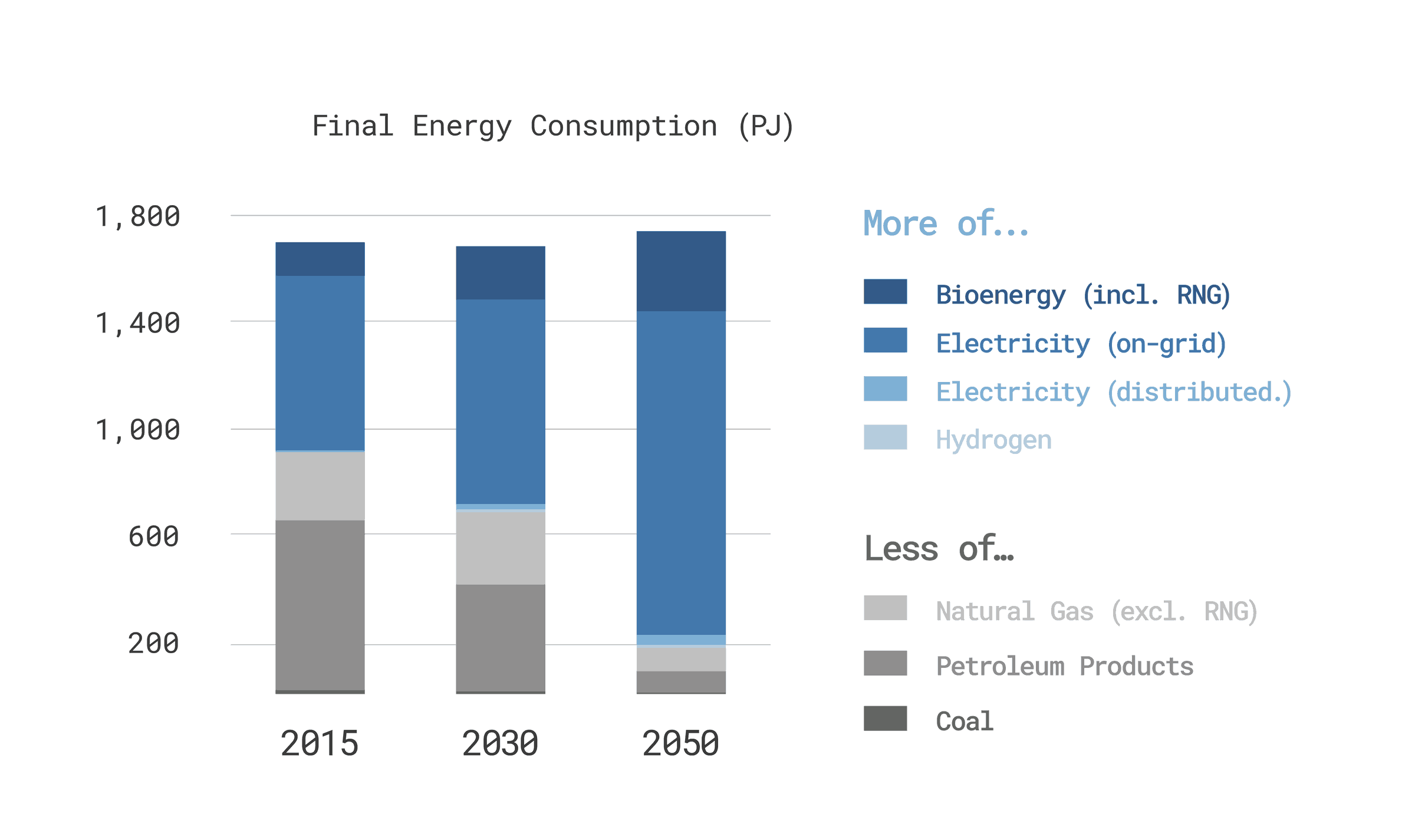
Dunsky is pleased to present the results of a large study commissioned by the Government of Quebec on decarbonizing the province’s economy (see infograph here). Unveiled in the company of Minister Benoit Charette, the study is serving as the launchpad for consultations leading up to the province’s forthcoming 2030 Electrification and Climate Change Plan (for which Dunsky is leading the Electrification Working Group).
As part of the two year study, the Dunsky team and our partner ESMIA built a comprehensive, economy-wide GHG optimization model for all energy and non-energy sectors (applicable by design to all Canadian provinces and U.S. states). The study concludes that it is possible for Quebec to reach its GHG target for 2030 (-37.5% from 1990) and its 2050 objective (-80 to -95%). To do this, Quebec must act quickly to accelerate the use of low-carbon technologies across every sector of the economy.
The resources to be mobilized revolve around four major themes:
- Demand management (energy efficiency, public transport, land-use planning);
- Electrification of energy demands – accompanied by increased use of bioenergy – especially in transportation and industry;
- Significant reductions in non-energy emissions (waste, industrial processes, agriculture); and
- Increased generation of renewable energy to meet the needs of electrification.
The transition to a low-carbon economy will require significant investments – on the order of an additional $1.7B/year by 2030 – and will generate very interesting outcomes for Québec. In particular, we estimate that the province’s balance of trade will improve by $5B/year, going from a large deficit now to a slight trade surplus.
Readers can consult an info-graphic produced by Dunsky, which summarizes the results of the study, or download the full report here. They can also participate in the Quebec government consultation here.


